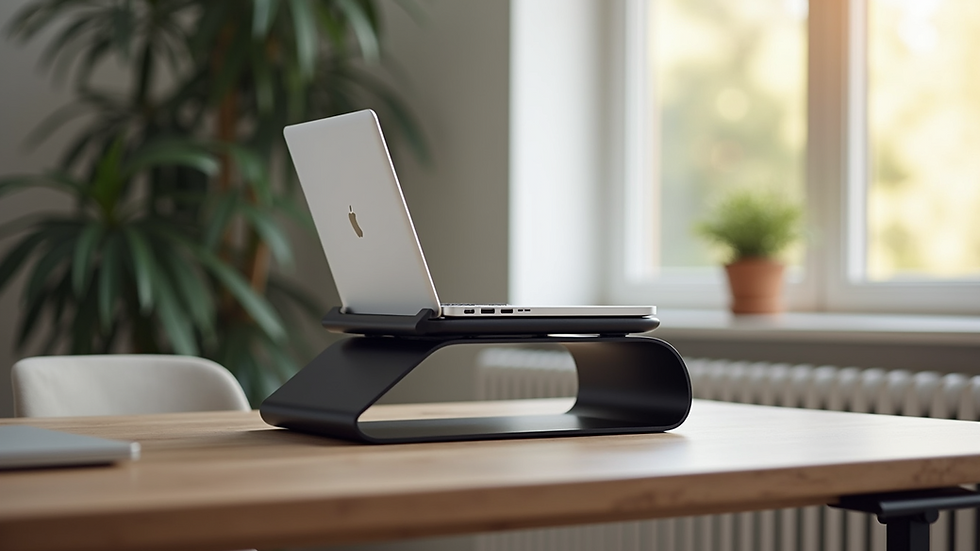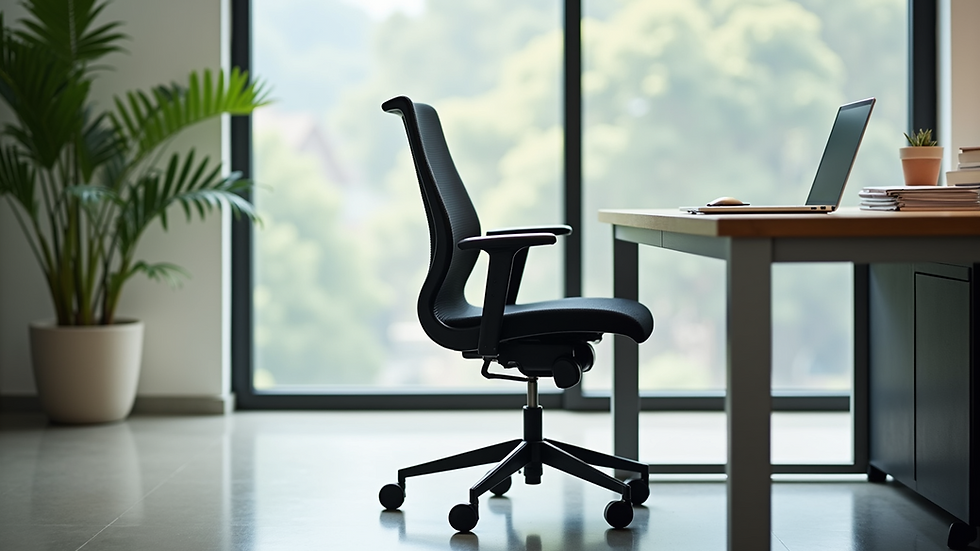Conquer Tech Neck: Master Your Posture and Banish Neck Pain with These 5 Essential Tips
- Darek Kowal
- Aug 6
- 3 min read

In today’s digital world, many people are familiar with the discomfort of “tech neck.” With our dependence on smartphones, tablets, and computers, it’s no wonder neck pain is on the rise. If you've ever felt stiff or sore after a long session on your devices, you're not alone. But there’s good news! By understanding tech neck and following a few simple tips, you can improve your posture and reduce neck pain significantly.
Tech neck occurs from the consistent downward tilt of the head when using devices. Studies show that looking down at a phone can place around 60 pounds of pressure on the neck. This constant strain can lead to discomfort and serious health issues over time. Fortunately, improving your habits can lead to better alignment and relief from pain.
Let’s explore five practical tips to help you combat neck pain and enhance your posture.
1. Be Mindful of Your Device Height
One of the simplest adjustments you can make is to set your devices at eye level. Keeping the screen aligned with your eyes allows you to view it without bending your neck down.
Use accessories like laptop stands or phone holders. For instance, raising your laptop by just six inches can reduce the angle of your neck and diminish discomfort. This small shift can lead to smoother working conditions.

2. Take Regular Breaks
Your body isn’t built to stay in one position too long. Taking regular breaks is key to fighting tech neck. Follow the 20-20-20 rule: every 20 minutes of screen time, look at something 20 feet away for 20 seconds.
During these pauses, get up, stretch, and move your body. A report from the American Chiropractic Association states that even short stretches can reduce stiffness by nearly 30%. Incorporating movement into your routine can boost circulation and keep your neck feeling great.
3. Practice Good Posture
Consciously improving your posture can make a big difference in relieving neck tension. When seated, keep your back straight, shoulders relaxed, and feet flat on the floor.
For those working at a desk, investing in an ergonomic chair can provide vital support for your lower back. A proper chair can lower the risk of neck pain by nearly 25%, as it encourages a healthy sitting posture. Ensure that your knees are at a 90-degree angle to help alleviate pressure on your neck.
Here's A Link To An Affordable Lumbar Support That I Use Every Day! LINK

4. Strengthen Neck and Shoulder Muscles
Building up your neck and shoulder muscles can provide strong support for your head and improve posture. Simple exercises like chin tucks, shoulder rolls, and neck stretches can easily fit into your day, even during work breaks.
For increased strength, weight training or Pilates focusing on the core and upper body are great options. Engaging these muscle groups can improve overall stability and are shown to reduce neck pain by over 40% in regular practitioners.
5. Mind Your Sleep Position
Believe it or not, your sleep position can play a crucial role in neck pain. If you wake up feeling sore, it may be time to re-evaluate how you sleep. Opt for sleeping on your back or side, which are generally healthier than sleeping on your stomach.
Choosing the right pillow is also essential. Supportive pillows that help keep your neck aligned with your spine are best. For some, memory foam or cervical pillows may provide the right comfort, helping to prevent morning neck stiffness.
In summary, tech neck is a widespread issue that stems from our growing reliance on technology. Yet, with mindful changes in our daily habits, we can tackle tech neck head-on and promote better posture and comfort.
By positioning your devices properly, taking breaks, maintaining good posture, strengthening muscles, and being mindful of your sleep position, you can significantly enhance your comfort and overall health. These strategies not only lead to increased productivity but also pave the way for a pain-free neck in the long run.
For More Fitness Tips/Nutrition Advice, Book A Free Consultation Call Today!






Comments